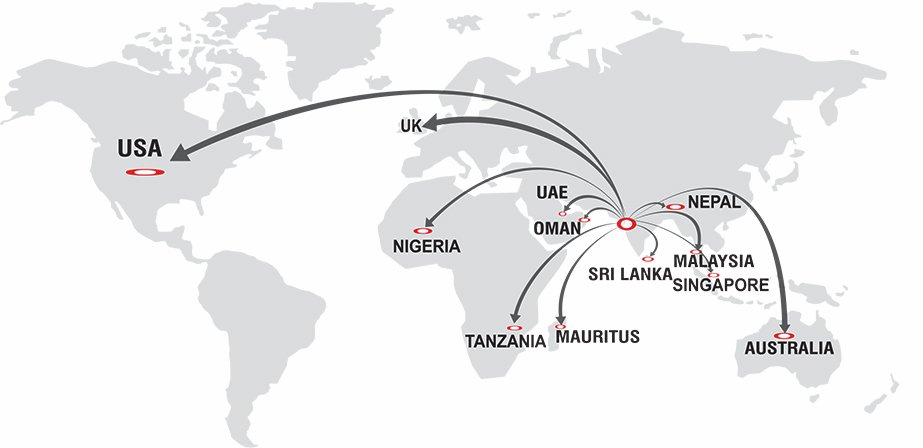As the colorful world of photography continuously expands, photographers find themselves in a realm where their images are not just meant for traditional prints, but also for online sharing across various platforms. Whether you are a budding enthusiast, a seasoned professional, or simply an individual eager to showcase your visual treasures, the process of exporting and preparing your photos for both online and print use holds great significance. Join us on this captivating journey as we delve into the art of translating your captured moments into stunning pixels, mastering the delicate balance between online display and tangible galleries. Get ready to unlock the secrets that will elevate your images to new heights, captivating audiences both near and far.
Preparing Your Photos for Online and Print Use: A Comprehensive Guide
Organizing Your Photo Library
Before you dive into preparing your photos for online and print use, it’s essential to have an organized photo library. With a well-structured library, you can effortlessly locate specific images and ensure a smooth editing process. Here are some tips to help you get started:
- Create folders: Begin by categorizing your photos into folders based on events, locations, or themes. This will help maintain a logical and easily navigable photo library.
- Add keywords and tags: Assign relevant keywords and tags to each image to enhance searchability. Whether it’s the location, subject, or any other significant information, tags make it a breeze to find specific photos later on.
- Delete duplicates and unwanted images: Over time, our photo collections tend to accumulate duplicates and shots that didn’t quite make the cut. Take some time to delete these unnecessary photos, decluttering your library and saving valuable storage space.
Editing and Enhancing Your Photos
A well-edited photo can truly bring out its best qualities, whether you’re sharing it online or printing it. Here are some key steps to consider when editing and enhancing your photos:
- Brightness and contrast: Adjusting the brightness and contrast can significantly enhance the overall appearance and clarity of your photos. Strike a balance to avoid over or underexposure.
- Color correction: Correcting the color balance ensures that your images display accurate and true-to-life colors. Eliminate any color casts or discrepancies to make your photos visually appealing.
- Crop and composition: Pay attention to the composition and framing of your photos. Consider cropping unnecessary elements and experimenting with different perspectives to create visually pleasing compositions.
Choosing the Right File Formats and Resolutions
When preparing your photos for online and print use, it’s crucial to select the appropriate file formats and resolutions. Here are some guidelines to help you make the right choices:
- File formats: Opt for JPEG for online use, as it provides a good balance between quality and file size. For print use, consider using TIFF or RAW formats to preserve maximum quality.
- Resolutions: For online sharing, a resolution of 72 pixels per inch (PPI) is typically sufficient. However, when printing, aim for a higher resolution (around 300 PPI) to ensure sharp and detailed prints.
- Consider file sizes: Balance the file size with your storage capacity and the intended use of your photos. Smaller file sizes are ideal for online sharing, while larger file sizes allow for more flexibility during printing and editing.

Understanding Export Settings: Optimizing Quality and File Size
Exporting files is an essential step in any digital project, whether it’s showcasing your stunning photography portfolio, sharing an animated video, or delivering a high-quality presentation. However, understanding the intricacies of export settings can be a bit overwhelming at first. Fear not! In this section, we’ll unravel the mysteries of optimizing both quality and file size, enabling you to strike the perfect balance for your specific needs.
The Art of Quality Optimization
When exporting your files, maintaining the highest possible quality is often a top priority. To achieve this, pay attention to the following key settings:
- Resolution: Higher resolutions offer crisper images, but they may come with larger file sizes. Consider the intended use of your file, whether it’s for print or digital display, and adjust the resolution accordingly to avoid unnecessary space consumption.
- Color Space: Choosing the right color space is crucial, especially when dealing with visuals. RGB (Red, Green, Blue) is typically preferred for digital display, while CMYK (Cyan, Magenta, Yellow, Key) works best for print. Make sure to select the appropriate color space to preserve the integrity of your artwork.
- Compression: Experiment with different compression algorithms to balance file size and image quality. Lossless compression retains the most detail but results in larger file sizes, while lossy compression reduces file size by sacrificing some detail. Find the compression level that suits your project’s needs, striking the perfect harmony.
Achieving File Size Efficiency
File size plays a significant role in various scenarios, such as when uploading content to websites or sharing files via email. Consider the following tips to optimize file size while maintaining an acceptable level of quality:
- File Format: Different file formats have varying degrees of compressibility. JPEG is excellent for photographs, as it can significantly reduce file size without noticeable quality loss. PNG, on the other hand, is great for graphics, offering lossless compression at the expense of a larger file size.
- Bit Depth: Lowering the bit depth reduces the number of colors used in an image, resulting in smaller file sizes. However, this may also lead to color banding or a loss of fine details. Understanding the trade-off here is essential for achieving the perfect balance.
- DPI (Dots per Inch): For digital display, using a lower DPI can dramatically reduce file size without compromising visual quality. However, be cautious when adjusting the DPI for print, as it affects the image’s size and print output.
By mastering the art of export settings, you can optimize both the quality and file size of your precious creations. Remember, it’s all about finding that sweet spot that best serves the purpose of your project.

Choosing the Right File Format: JPEG, PNG, or TIFF?
When it comes to choosing the right file format, the options can be overwhelming. How do you know which one is best suited for your needs? Let’s dive into the world of JPEG, PNG, and TIFF formats to help you make a more informed decision.
JPEG (Joint Photographic Experts Group)
Known for its ability to compress image files without sacrificing too much quality, JPEG is the go-to format for most digital cameras and online platforms. Whether you’re sharing stunning vacation photos or showcasing your product images on an e-commerce website, JPEG offers a great balance between file size and image detail. Just keep in mind that repeated editing and saving can lead to a loss in quality, so it’s important to work with a copy of your original file.
PNG (Portable Network Graphics)
If transparency is a priority in your graphic or web design work, PNG is the format to consider. With the ability to maintain crisp edges and clear backgrounds, PNG is ideal for logos, icons, and images that require a transparent background. This format supports a wide range of colors, making it versatile for various design applications. However, PNG files can be quite large in size, so they may not be the best choice if you need to optimize loading times on a website.
TIFF (Tagged Image File Format)
When it comes to preserving all the fine details in an image, TIFF is the format that shines. As an uncompressed file format, TIFF retains every bit of information, making it a preferred choice for professional photographers, publishers, and designers. With support for various color modes and lossless compression, TIFF is perfect for archiving or printing high-resolution images. However, due to its large file size, TIFF might not be the most practical choice for everyday web use.

Color Management: Ensuring Consistency across Digital and Print Platforms
In today’s visually driven world, maintaining consistent colors across different platforms is crucial for businesses and creatives alike. From vibrant digital displays to high-quality prints, color management plays a vital role in ensuring your brand’s integrity and message resonates with your audience.
Color management involves a series of processes and techniques that aim to harmonize colors between devices, such as monitors, cameras, printers, and even software applications. By implementing a robust color management workflow, you can effectively eliminate discrepancies and achieve accurate and consistent colors throughout the entire production and reproduction process.
One of the key challenges faced in color management is the variance between the RGB (Red, Green, Blue) color space used in digital platforms and the CMYK (Cyan, Magenta, Yellow, Black) color space used in print. These two color spaces have different gamuts, resulting in variations when transitioning from screen to paper. Through color management techniques, such as color profiling, calibration, and conversion, you can ensure that what you see on your screen closely matches what is printed on paper.
Implementing color management across platforms brings several benefits. Firstly, it ensures brand consistency, allowing your logo, graphics, and marketing materials to appear as intended regardless of the medium. Secondly, with accurate color reproduction, you can deliver a visually stunning experience that captivates your target audience’s attention, instills trust, and enhances overall brand perception. Furthermore, color management mitigates rework efforts and reduces costs by minimizing the need for trial and error to achieve desired colors, resulting in a streamlined and efficient production process.

Sharing on Social Media: Best Practices for Showcasing Your Photos
When it comes to sharing your photos on social media, it’s important to showcase them in the best possible light. After all, you’ve put in the time and effort to capture those perfect moments, and now it’s time to make them shine for the world to see!
1. Choose the right platform: Each social media platform has its own unique features and audience. Take the time to understand which platforms cater best to the type of photography you want to showcase. Are you an aspiring landscape photographer? Instagram might be your best bet. If you’re passionate about travel photography, consider utilizing Facebook or Pinterest to create photo albums that tell a story.
2. Compose captivating captions: A well-crafted caption can add depth and meaning to your photos, enticing your audience to stop scrolling and engage with your content. Experiment with catchy one-liners, thought-provoking questions, or even interesting trivia related to your photos. Don’t be afraid to let your creativity shine through!
3. Utilize hashtags: Hashtags are an invaluable tool for boosting the discoverability of your photos. Research popular hashtags within your photography niche and incorporate them strategically into your captions. This will help expose your photos to a wider audience and increase the chances of them being found by fellow photography lovers.
4. Engage with the community: Remember that social media is all about connecting with others. Take the time to engage with your followers by responding to comments, liking and commenting on their posts, or even joining photography groups or communities. It’s not just about showcasing your own work; it’s about being part of a larger, supportive community that shares your passion for photography.
By following these best practices, you’ll be able to showcase your photos in a way that captures attention, sparks conversations, and leaves a lasting impression. So go ahead, get creative, and let your photography shine on social media!
In Summary
In the boundless realm of digital photography, your captured moments find new life beyond the constraints of memory cards and dusty photo albums. Now, they soar effortlessly through the vast expanse of the internet, as well as grace the tangible pages of glossy magazines and prints. But before you unveil your visual masterpiece to the world, a crucial step lies ahead – preparing your photos for online and print use.
With diligent finesse, you have meticulously edited and transformed your snapshots, bringing them to life with vibrant colors and compelling compositions. Yet, the journey is not complete until you have exported and shared your artwork, ensuring that it shines brilliantly in any medium it adorns.
Entering the realm of online presentation, exporting your photos requires a delicate touch, an understanding of the digital landscape. File formats play a vital role in this process – JPEG sets your images free with a perfect balance of quality and compression, while PNG upholds the integrity of every pixel but can be a tad heavier. These formats lend themselves effortlessly to social media platforms, personal websites, and online portfolios, where your visions can dance under the digital spotlight. Resize, if needed, for optimal viewing and showcase the wonders you’ve crafted with the world at the mere click of a button.
Yet, the allure of prints lingers tantalizingly, beckoning us to transform our digital treasures into tangible keepsakes. But venturing from screen to paper is not to be taken lightly. With an eye for detail, you must consider the resolution, ensuring each stroke of color and every contour dances seamlessly across the page. DPI becomes your ally in this endeavor, where a higher number guarantees the finest quality; a minimum of 300 DPI whispers elegance, transforming your work into a symphony of pixels and ink.
Navigating this enchanting maze of digital and physical realms is nothing short of an ethereal dance. Your mastery of exporting and sharing enables your creations to transcend their digital origins, weaving their way into the hearts and minds of admirers both near and far.
So, with a gentle click and a moment of anticipation, your photos take flight, destined to traverse the vast expanse of the internet or breathe life onto the textured canvas of prints. And as they venture into new horizons, may your artistry continue to shine, captivating and inspiring those who witness the world through your lens.




